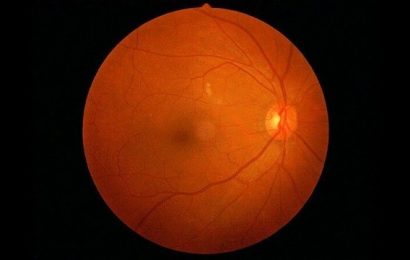Elevated levels of remnant cholesterol, or cholesterol other than high-density lipoprotein and low-density lipoprotein (LDL), are associated with a substantially increased risk of developing peripheral arterial disease (PAD), suggests an analysis of a large population cohort.
Benjamin N. Wadström, MD, Herlev and Gentofte Hospital, Herlev, Denmark, and colleagues studied data on more than 120,000 individuals, finding that those with the highest levels of remnant cholesterol had a fivefold increased risk for PAD, compared with those with the lowest levels.
“This risk was higher than the corresponding risks of myocardial infarction and of ischemic stroke, and we believe that large, randomized trials should investigate whether lowering of remnant cholesterol could reduce the risk of peripheral artery disease,” said Wadström.
The research was presented May 31 at the virtual European Atherosclerosis Society (EAS) 2021 Congress.
Approached for comment, Alberico L. Catapano, MD, PhD, professor of pharmacology, University of Milan, and past president of the EAS, said that the relation between “so-called remnant cholesterol” and atherosclerosis overlaps that seen with LDL cholesterol.
“In other words, the organs and sites that are targeted by the proatherogenic, atherosclerotic effect of LDL are essentially the same as those for remnant cholesterol,” he told theheart.org | Medscape Cardiology.
He explained that this is to be expected, as they both contain apolipoprotein B (apoB), and apoB-containing lipoproteins are known to be atherogenic, “especially if their size is relatively small, as they can cross the arterial wall and become trapped. This can happen in the heart, in the carotids, in the brain, and it happens in the periphery.”
However, Catapano questioned the conclusion by the authors that remnant cholesterol levels can be usefully lowered, as the “definition of ‘remnant’ is not clear.”
“In other words, which part of the remnant is calculated?” he asked, adding that “it may be that just a part of the lipoproteins named remnant may be really proatherogenic and some may be neutral, let’s say the larger ones, and then when you reduce the remnant cholesterol, you may not target the right subfraction.”
Therefore, the direct correlation between which component of the “heterogeneous” group of lipoproteins that make up remnant cholesterol remains to be established, “and that is why I may be a little bit more cautious.”
Still, Catapano added, “certainly it is something that needs to be investigated. It is certainly something that is very promising, but further refinement is needed.”
Wadström began his presentation by noting that lipoproteins are “usually classified according to their varying size and density.”
These range from the highest density HDL particles through LDL, intermediate-density lipoprotein (IDL), very low density lipoprotein (VLDL), chylomicron remnants, “and then the largest, lowest-density chylomicrons.”
It is “well known that LDL particles can enter the arterial intima, get trapped and cause atherosclerosis, but the same is also true…of IDL, VLDL, and chylomicron remnant particles,” he said.
These can be collectivity referred to as remnant cholesterol, or triglyceride-rich lipoprotein cholesterol, because of their high triglyceride content, Wadström noted.
He said that remnant cholesterol can be simply calculated by taking total cholesterol levels and subtracting HDL and LDL cholesterol levels.
Previous studies have shown that increased remnant cholesterol is associated with an increased risk for both myocardial infarction and ischemic stroke, so the investigators set out to determine the relation with PAD.
They initially studied data from the Copenhagen General Population Study, including 106,937 individuals in whom 1586 events were recorded up to 2018, comparing the results with those in the Copenhagen City Heart Study, from which 13,974 individuals and 1033 events were included.
As expected, the cumulative incidence of PAD in the Copenhagen General Population Study increased markedly with age.
Dividing individuals into quartiles of remnant cholesterol levels, those with the highest levels — at least 1.5 mmol/L — not only had a significantly greater incidence of PAD than those with levels below 0.5 mmol/L, but the increase with age was also steeper.
By 90 years of age, individuals with the highest remnant cholesterol levels had a cumulative incidence of approaching 15%, compared with just over 5% in those with the lowest levels (P for trend, 6 × 10–39).
Similar patterns were seen in the Copenhagen City Heart Study, with almost an identical cumulative incidence in individuals with the lowest and highest remnant cholesterol levels (P for trend, 1 × 10–32).
Cox regression analysis that took into account age, sex, LDL cholesterol, systolic blood pressure, smoking status, and cumulative smoking only served to underline the significance of the association.
Compared with remnant cholesterol levels below 0.5 mmol/L, the hazard ratio for PAD for levels of 0.50 to 0.99 mmol/L were 2.0 (95% CI, 1.5 – 2.7), rising to 3.1 (95% CI, 2.1 – 4.4) for levels of 1.00 to 1.49 mmol/L, and to 5.0 (95% CI, 3.2 – 7.9) for levels of at least 1.50 mmol/L (P for trend, 1 × 10–15).
For myocardial infarction, the corresponding results ranged from a hazard ratio of 1.8 (95% CI, 1.4 – 2.3) to 4.0 (95% CI, 2.7 – 5.8) (P for trend 5 × 10–19), whereas those for ischemic stroke ranged from 1.3 (95% CI, 1.1 – 1.6) to 2.0 (95% CI, 1.4 – 2.7) (P for trend, 3 × 10–4).
“The hazard ratios for peripheral artery disease were consistently higher than the hazard ratios for myocardial infarction and for ischemic stroke,” Wadström underlined.
No funding declared. Coauthor Børge Nordestgaard declares relationships with AstraZeneca, Sanofi, Regeneron, Akcea, Amgen, Kowa, Denka, Amarin, Novartis, Novo Nordisk, Esperion, and Silence therapeutics. No other relevant financial relationships declared.
European Atherosclerosis Society (EAS) 2021 Congress: Abstract 1016. Presented May 31, 2021.
For more from theheart.org | Medscape Cardiology, join us on Twitter and Facebook.
Source: Read Full Article


